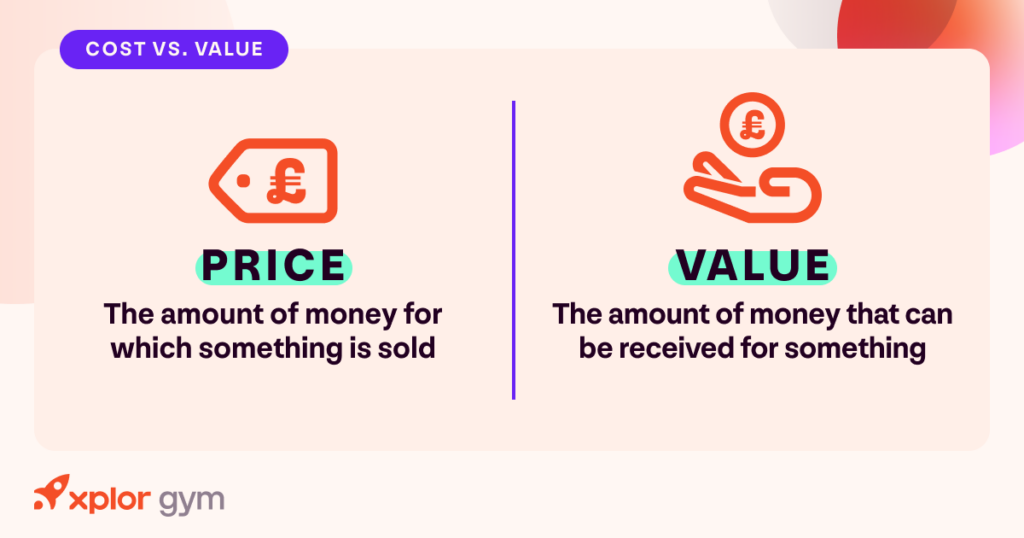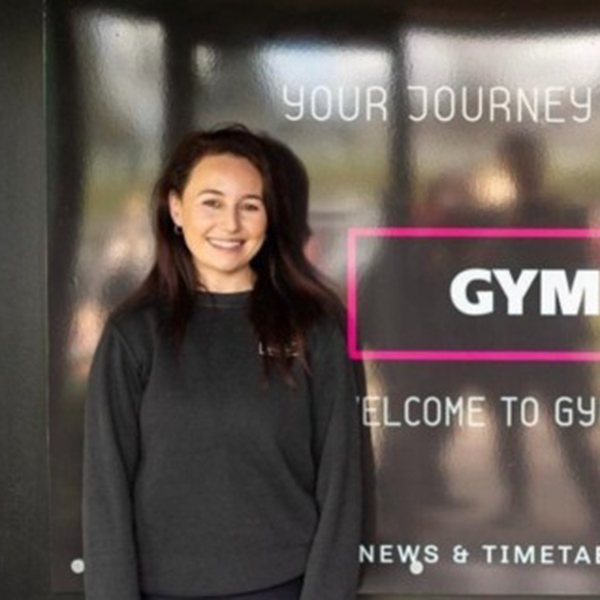How do you create an effective gym pricing strategy? In this guide to membership pricing, we’ll help you work out how much you should charge members.
Your pricing strategy says a lot about your business. How do you get it right? When it comes to gym membership fees there’s no one-size-fits all model to follow. You need to take a careful approach when working out how much to charge your members.
The fitness industry is both fast-paced and vast. Your prospective members will have many options when choosing a gym or fitness club. And 89% of adults in the UK are concerned about the cost of living.
Plus, concerns over price and perceived value for money are the biggest reasons why people choose not to invest in gym memberships. So, in short, pricing matters.
You need a pricing strategy that reflects the value you offer, is financially workable, and appeals to prospective members. We’re here to help you create a winning gym pricing strategy.
Power up your business & stay in the know
What is a gym pricing strategy?
Good question! A gym pricing strategy refers to the method or model used to work out what to charge for using your facilities and services. Your pricing strategy should help you attract and keep members. While also generating revenue and achieving profit.
Gyms use many different pricing models. The right approach for you will depend on factors like:
- Cost of operating
- Target demographics
- Level of competition in your area (and even online)
- Member experience and effectiveness in solving pain points

Price vs. value
When you’re creating your pricing strategy, it’s important to consider the difference between price and value.
“Price is what you pay. Value is what you get.”
Warren Buffett
Often, gyms and fitness clubs compete on price. And while average gym membership prices have increased over the past couple of years, this has had a lasting impact. For many gymgoers, a membership is viewed as a commodity rather than as an investment in the future.
Recent gym membership sales research, shows that this is creating a barrier to purchase. 68% of non-gym members in the UK state that cost is holding them back from joining.
And when members decide exactly which club to join, cost is the second biggest decider, beaten only by location.
So, if you want to build a sustainable, profitable business, you need to make sure that members are clear on the value of a membership.

Typical gym pricing models
Most clubs use a mix of membership models to appeal to different member needs and tastes. Let’s look at the different gym pricing models available to your fitness business:
Monthly memberships
This is likely the gym pricing model you’ll be most familiar with. Members are charged a fixed fee each month, usually collected from their bank account via Direct Debit.
The fitness industry can be affected by seasonality.
January and September tend to be the busiest months for most new gyms with lots of new joiners. Cancellations tend to pick up as the year goes on from March onwards – as habits slip.
So, monthly memberships will give you predictable income. Many members will sign up to a year-long gym contract paid in monthly instalments.
Plus, many gyms also offer a more flexible pay monthly option – like a shorter-term contract or rolling monthly membership. You can charge a higher price for a flexible option. This encourages members to choose the longer contract. And protects your business against sudden cancellations.
You could also offer special rates for:
- Age groups and other demographic characteristics – for example, a lower rate for students, juniors under 16, or over 60s
- Families – for example, discounted rates for families, couples, or same household groups with a linked membership
- Time-based / peak or off-peak – for example, a lower rate for access during quieter times and days only, and a higher rate for access at any time
Annual memberships
You could also offer a year-long membership package paid in full. This will suit members who don’t want a monthly payment, preferring to pay straight away.
You get income upfront. But it can be easier to lose these members after the year is up. Keep them engaged throughout the year and set up an effective renewal campaign.
If you choose this model, create automated reminders in your gym management software. Trigger these to send an email and SMS a month or so before their annual membership expires.
Pay-as-you-go (PAYG) memberships, passes & trials
PAYG (or casual) memberships let members pay on a visit-by-visit basis. This is a great way to attract new paid members to your club. They get to experience what you have to offer before committing to a full membership. It’s also ideal for those who want occasional access, don’t want to commit to a membership, or are in the area temporarily for leisure or work.
There are 2 common ways of offering PAYG memberships: pay by activity or buy a day pass.
Pay by activity is transactional – PAYG members buy a gym session or take part in a class. Day passes or trial periods give access to some or all of your facilities for a day (or several days) for a set fee.
PAYG rates help members frame the value of the membership packages you offer. For example:
- If a gym session is £8…
- And a monthly membership with unlimited gym sessions is £32…
- Members know if they do 4+ gym sessions a month it’s worth getting a membership (4 x £8 = £32)
Bundles
If your club has lots of different facilities, your basic monthly membership may simply offer access to train in your gym. Let members upgrade and change to a premium membership bundle that includes access to all (or a choice) of your facilities and activities.
You could also offer unbundled monthly memberships. For example, if you offer group exercise classes, members could sign up for a membership that just includes classes and not use of your gym.
Another approach to bundles is to offer a certain number of gym sessions or classes for a fee. For example, 10 classes for £50 or 10 PT sessions for £400. Always set a time limit for use. This lets members commit to multiple sessions. And can be used with or without a monthly membership.
Offer recurring class memberships
TipUse your gym management software to offer a series of recurring classes paid for on a membership basis. This works well for specialised classes like Pilates or activities like HYROX training programmes. Members should automatically be booked onto all classes covered by their membership at the time of sign up.
Book a demo to see this in action
Pricing by type of fitness facility
Gym pricing strategies differ by type of facility. Where you choose to sit in the market will affect your approach to pricing. So, here’s what to keep in mind:
Budget
Looking to open a budget or low-cost gym? You’ll need to focus on offering facilities and services at a low price point.
Your goal is to attract members looking for a basic (but good quality) workout experience. Members who aren’t willing to pay a premium. Take a high volume, low margin pricing approach. Attract the greatest number of members your business can handle, at a low margin.
You’ll need to consider the range of membership packages you offer. Low-cost gyms usually offer packages without contracts that can be cancelled quickly.
Mid-Market
Opening a mid-market gym? You’ll need to offer more facilities and services than budget gyms at a moderate price point.
You’ll be targeting members who are trading up from a low-cost membership. And those looking for a better-quality club where they’ll get more attention and advice, plus a greater range of facilities and activities.
Keep your price point low enough to attract those trading down from premium clubs. Typically, members are trading down because they didn’t use enough of the facilities/services on offer to justify the price. Or simply because they need to pay less.
Premium
Planning a higher-end premium gym? You’ll need to offer a luxury experience at a high price point.
Members will expect a luxury workout environment. Including a range of high-end equipment, facilities, events, and services. Create an exclusive, personalised workout experience to succeed.
Boutique
Are you opening a boutique gym? Offer unique and specialised services on a smaller, more intimate scale. And then, you’ll be able to charge a high price point.
Boutique gyms attract members looking for a highly personalised experience and willing to pay a premium for it. Word of mouth plays a big role in the growth of boutique gyms. So, you’ll need to create a buzz that gets members talking.

Average cost of a gym membership
Before you get too far into creating a pricing strategy for your gym. Look at the average cost of a gym membership in the UK. It will help you frame how your local area measures up.
Leisure DB’s 2025 State of the UK Fitness Industry Report revealed that average monthly peak fees for non-contracted or rolling memberships look like this:
- As a whole, privately owned clubs charge £48.45 a month (that’s up from an average of, £47.24 a month in 2024, £44.92 a month in 2023 and £42.99 a month in 2022)
- Averages differ by region – London is highest at £76.26, Northern Ireland is lowest at £35.79
- Independent single site clubs charge £43.12
- Multi-site clubs charge £53.15
- Low-cost budget clubs charge £25.78

Guide: Create a winning gym pricing strategy
1. Understand your costs and breakeven point
When opening a gym, you must understand what your cost of setting up and doing business will be. Both one off and ongoing costs.
You’ll need to consider:
- Equipment cost (buying or leasing)
- Rent
- Staffing
- Licenses (music, classes, software etc.)
- Utilities
- Insurance
- Legal fees
- Access control hardware
- Advertising and marketing
- Taxes etc.
- And more
Once you know your standard expenses (and one-offs), you’ll be able to start calculating your breakeven point.
Think about variable costs, as well as fixed costs, when calculating your breakeven point. Your breakeven point is the amount of revenue you need to bring in to cover your expenses. Once you hit breakeven, you’ll start generating profit.
Understanding profitability
Go deeperFind out what it takes to build a profitable gym or fitness club. And get tips to boost profitability.
Read now2. Calculate the membership capacity of your club
Next think about capacity. What’s the highest number of members your business can reasonably accommodate?
IHRSA recommends taking these steps to calculate membership capacity:
- Work out the number of members who can use the club at one time. Do this by counting all strength equipment, cardio equipment, and studio spaces. Each piece of equipment/space is one member (unless pieces of equipment can be used by many people at once). The total number is the greatest number of members who can use your club at once
- Divide the number of daily open hours by the average duration of a visit (when starting a gym business, work with 1 hour unless your model is duration specific). That will give you the number of membership cycles per day
- Multiply the number of membership cycles per day by the total number of members the club can accommodate at one time
- The final number is your club’s maximum capacity
There will be some members who visit more often than others and seasonal variations, so this number will be approximate. Offering peak and off-peak memberships can help you manage capacity.
Knowing your breakeven point and your membership capacity will let you know roughly how much revenue you need to generate per member.
3. Conduct competitor research
Understanding how much revenue per member you need to generate is important. Yet, that alone won’t make your gym pricing strategy effective. You need to assess the local competition and understand where you’ll fit in the market.
Price matters. 23% of gymgoers rank cost as a top priority when choosing a specific gym. Your prices must accurately reflect your position in the local market.
Look at all the clubs within a commutable distance from your chosen location. Gymgoers who go to the gym 1-5 times a week typically live no more than 5.1 miles away. So, looking within a 10 to 15-mile radius of your location is a sensible starting point.
Try to find out:
- What their offering is like? (e.g., facilities, classes, equipment brands, opening hours)
- What their pricing is? (e.g., membership packages available, PAYG options, day passes etc.)
- Who are their target customers? (This one may be harder to work out. Speak to family, friends and colleagues who have had memberships. Visit at various times of day to assess who is in attendance. And look at the classes they offer to get a feel)
- What are they good at? Do they have weaknesses? (Again, this can be harder to find out. Get an idea by reading reviews online, speaking to members/past-members you know, and visiting if possible)
This research will help you identify what to charge based on the position you want to take in the market.
Remember, being competitive isn’t always about being cheapest. It’s about offering value that justifies your price.
4. Dig into target member demographics
As well as understanding your competition, you need to get to know your potential members. Think about the type of club you want to open. Ask yourself these questions to work out what type of gymgoers you’re targeting:
- Are you targeting a broad or niche audience?
- What sort of equipment will you offer?
- What other facilities and services will you have?
- Will you specialise in a particular type of training like strength? Will you offer personal training?
- What will your opening hours be?
- What are the demographics around your location? What sort of an area are you in (e.g., industrial, town/city centre, residential, rural etc.)?
Next, think about the members you’ll attract and identify demographic characteristics. Consider:
- Age group(s)
- Spending power and patterns
- Interests
- Challenges
- Stage of life
Conduct online research. Plus, interview and/or survey target members to gather this data. Your findings will help you identify the packages you need to create, price points, and how to position the value of your club in an appealing way.
Invest in valuable research
Go deeperWhen you are selecting your location, you should invest in a latent demand report that’ll show you exactly who you’re competing against. And who is likely to join your club. This will help you build a solid gym pricing strategy and let you know how many members you can realistically attract.
Learn more about this5. Create your membership packages
Next up, decide which membership packages you want to offer members. A tiered approach to memberships is common. For example, a Gold, Silver, and Bronze tiered approach with access levels and price point differing by tier.
Start simple when opening to make your packages easy for members to understand. You can add more options when you know how well received your packages are.
Consider how (and if) you’ll cater for casual members – pay by session/activity or more comprehensive day passes.
Think about the duration of memberships you want to offer. For example, 12 month or rolling monthly contracts. And whether you want to offer any concessions for certain demographic groups.
Once you know the packages you want to offer, durations and any concessionary groups you’ll cater for, you can go about setting your gym pricing.
Make sure any PAYG options can be used to show the value of your tiered packages. And when setting annual memberships and 12-month contract pricing, your pricing should account for all 52 weeks of the year.
Assess your prices against your:
- Breakeven point
- Membership capacity
- Competition
- Target members and their likely perceived value for money
6. Set joining fees
Once you’ve set price points for your membership packages, decide whether you need to charge a joining fee.
Joining fees (sometimes called admin fees) are an important source of revenue for many gyms and fitness clubs. Typically, these cover:
- The cost of winning a new member
- The extra admin work it takes to help a member get started
- The risk of a member cancelling during or soon after onboarding. Accounting for the cost of inductions, setting up payments, and any other perks you give new members like merchandise
Joining fees protect you if a member cancels soon after signing up. And can also incentivise members to stick with you for longer.
A typical joining fee will be £10-30 (or more for high-end gyms).
Almost 10% quit within 90 days
FactClose to 1 in 10 members will have ended their first Direct Debit membership within 90 days of starting.
Get more insights like this7. Identify upselling & cross-selling opportunities
Remember to think about upselling and cross-selling. These are a vital part of any comprehensive gym pricing strategy.
Upselling is when you give your members the opportunity to upgrade to a higher value package or sign up to an add-on/bolt-on. Whereas cross-selling is inviting members to buy different or complementary items and services.
Many gyms will give members the choice of adding a bolt-on to their membership to get an extra perk. For example, if a membership has 1 visit to your gym per day included, you could offer a bolt-on that gives unlimited access.
Likewise, clubs will give members the option to buy merchandise, padlocks for lockers, PT sessions, and more.
Both sales techniques will help you earn extra revenue from your members (and enhance member experience).
Use the gym reporting software features in your club management system to monitor sales revenue per member. Act on any trends you see to target higher turnover.
8. Use your gym management software
You’ve set your membership prices, joining fee, and identified up- and cross-selling opportunities. Now it’s time to set these up in your gym management software.
Opting for all-in-one fitness centre software with embedded payments, you’ll be able to adjust and add new packages with ease. Plus create special offers too. Members will be able to join online conveniently and quickly.
Gym POS (point of sale) functionality within your software will make it easy to add items to sell. Including equipment and branded merchandise. Use your software to let members log-in and add bolt-ons to their membership at any time.
Use marketing and communications automation features to send targeted, triggered communications to members. Highlight upgrades, bolt-ons, and items to enhance the way they use your club.
Measuring success will be simple when you manage pricing with your fitness club management software. Track membership numbers and revenue. As well as getting information on sales trends and member habits.
9. Set up pre-sales
When you’re opening a club, pre-sales will set you up for success.
By marketing and selling memberships before you open, you’ll have income straightaway. Your opening day will be spent less focused on sales, and more on your new members and team.
Your gym management software should make it easy to set up pre-sale memberships and offers. Then automatically collect membership payments upon opening.
Pre-sales will also give you an insight into how your offering and gym pricing strategy will be received by your target audience.
10. Reflect pricing in your brand positioning
Your brand positioning and pricing strategies should go hand-in-hand.
Marketing author, consultant, and professor, Philip Kotler defined brand positioning as:
“The act of designing the company’s offering and image to occupy a distinctive place in the mind of the target market.”
Find what makes your brand unique and differentiates you from your competition. Using this create a positioning statement for internal use. Outline exactly what you do, for who and what makes you different.
This will guide how you run your business, your marketing, and ultimately how your members perceive your business. Make sure it’s aligned to your gym pricing strategy.
The secret to a powerful fitness business
Go deeperBranding is the most effective way to stand out from the crowd and create a strong connection with members.
Learn how to create a high value brand11. Think about your marketing & website
Now you know your prices and have a clear brand positioning statement to guide you. You’ll need to think about your gym marketing.
Make sure you’re able to clearly explain your pricing and packages to prospective members. Include key information like durations/contract length, what’s included, any restrictions, and billing details.
You’ll need a well-designed and easy to navigate website. It should have all the information about your club and membership packages. Check that prospects can get to the information they want with minimal clicks.
If your fitness offering is a new concept or very specific niche, consider whether to publish your prices online. A premium price can be off putting until prospective members understand exactly what you have to offer.
For familiar concepts and traditional clubs, adding your prices to your website will make sense. Price aware members can see straight away where you fit in the market and decide if you are a good fit for them.

The importance of regularly reviewing ROI
Once your gym has been open for a few months, start regularly reviewing your return on investment (ROI).
A simple ROI calculation is:
(Revenue – Cost of Business) ÷ Cost of Business x100
So, if your business achieves £25,000 in revenue and your cost of doing business is £20,000, then your ROI will be 25% (£5,000). You are looking for ROI to be positive.
Influencing ROI with gym pricing strategies
Experiment with your approach to pricing to increase ROI. That could mean:
- Creating new packages
- Adding different contract lengths
- Introducing special packages for specific groups
- Offering new bolt-ons to appeal to existing members
As your business evolves and grows, you’ll need to review your pricing strategy often. And use it to increase ROI.
There are a few pricing strategies you can look to when working out how to become more profitable. These include:
- Penetration pricing – this is where prices are set low to attract members away from competitors in your market. Typically, you should look to raise prices as members come to understand the value your club offers
- Price skimming – this is where prices are set as high as possible then slowly lowered over time to attract more price-sensitive members
- Value-based pricing – this is where prices are set based on how much a member perceives the offering is worth
Increasing prices
Sometimes you’ll want to increase your prices. Higher prices may cover higher operating costs, as well as investments you’ve made to improve your facilities and offering.
This can be a delicate matter. One that has the potential to affect member satisfaction and loyalty.
Before you increase prices, review the:
- Value you are providing to members
- Competitiveness of your prices compared to competitors
- Type of business you are running
- Demographic characteristics of your existing membership base
This will help you assess the amount you increase prices by and how to communicate increases.
The Active Insight (formerly Leisure-net) Price Increase Sensitivity Report found that tolerances for price increases can be quite different. For example, in England 40% of independent gym members would pay up to 20% more, yet in Scotland 47% would not accept any increase.
When raising prices, communicate the increase well in advance of the change happening. Highlight the great value you deliver and any recent investments you’ve made that are beneficial for members.
Introducing new revenue streams
Another way to influence ROI is to add new revenue streams by introducing new goods or services for sale. Think about what would work well for your fitness business. Ideas include:
- Running ticketed special events, like educational seminars
- Selling fitness equipment, like resistance bands and mats
- Adding new bolt-on packages, like PT session bundles
- Selling branded clothing, like t-shirts and sweatshirts
- Adding a virtual fitness option
- Selling healthy food, drink, and supplements
The wrap up…
Your gym pricing strategy matters. Take the time to understand your local market and identify what your target audience wants. Know your upfront and ongoing operating costs, and how much revenue you need to breakeven.
Choose the pricing models you’ll use, think about joining fees, and opportunities for up-and cross-sell. Align your brand positioning and marketing to your pricing approach. And create an impactful pre-sales campaign, so you start out strong from opening day.
Finally, keep experimenting and reviewing your pricing strategy to increase ROI.
Request a demo to find out how Xplor Gym can help you manage and measure the success of your pricing strategy.

by Megan Greenaway Customer Success Manager at Xplor Gym
-
First published: 16 September 2024
Written by: Megan Greenaway




